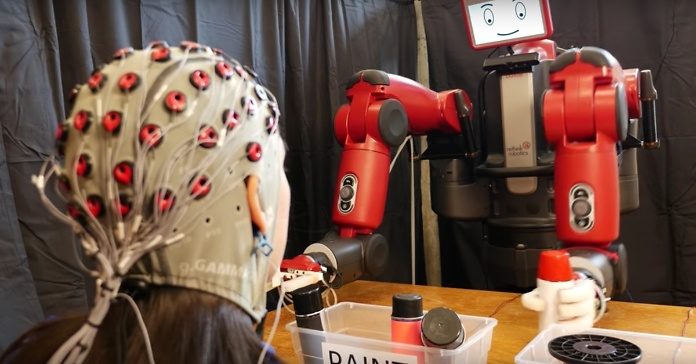
Aren’t we always nervous for lives when it comes to driving a car? Can you imagine having a self-driven car in your garage? I am sure the very thought about a self-driven car is going to give you goose bumps. Therefore, scientists have come up with a robot-enabled telepathy to keep control on the self-driven car. The researchers at the Boston University and the Computer Science and Artificial Intelligence Laboratory (CSAIL) at Massachusetts Institute of Technology have come up with a technology that uses brain signals to correct the robotic errors.

The brain and computer interface is what the researchers have used to control a robot. Though the concept is nothing new, but the training of an individual with BCI and to modulate the thoughts as per the machines was initially necessary. However, the study on the error-related potentials, which are produced in case of errors made by one or others, has proved that the control of the robots using these brain signals is possible. It is normally the humans who have to adapt to the robots but this technology follows the vice-versa version. This technology will be presented in Singapore at the International Conference on Robotics and Automation on May 2017. In order to prove their concept correct, the scientists collected an electroencephalography data from the volunteers who helped the industrial humanoid robot named Baxter pick up two objects. The use of machine algorithm is to analyze the data collected, which means that the robot can be fed with the information in real time.
However, the machine has issues noticing the ErrP signals generated by the brain cells which in turn have a huge impact on the system’s accuracy. Hence, the research is on developing a system designed to look out for the brain signals in real time rather than the use of a mechanical switch to help the robot track the signals. Even though the results are low, it seems to be a very promising technology. The human-robot interaction will help reduce the burden on the humans and make the autonomous machines bear the task burden making the whole ErrP and robot control concept a broader application in the future.
